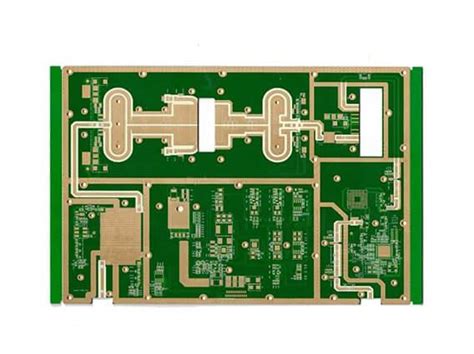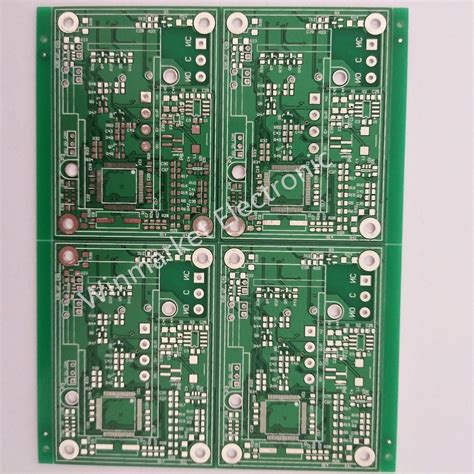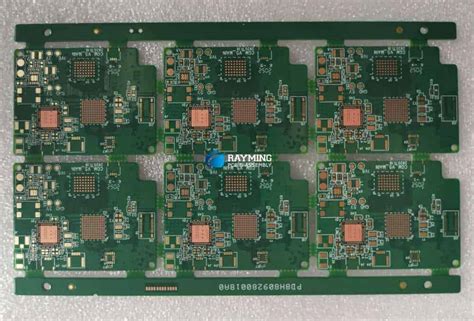A brief discussion of several major elements of post-design inspection
When a PCB board has completed layout and routing, and the connectivity and spacing are checked without error, is the PCB completed? The answer is of course no. Many beginners, including some experienced engineers, often rush through the work and ignore post-design inspection due to time constraints, impatience, or overconfidence. As a result, some very basic bugs appear, such as insufficient line width, component number silk screen pressed on vias, sockets too close, signal loops, etc. This leads to electrical problems or process problems. In serious cases, the board needs to be re-made, resulting in waste. Therefore, when a PCB is completed with layout and routing, a very important step is post-design inspection.
There are many detailed elements in PCB inspection. I have listed some of the most basic and most error-prone elements as post-design inspection.
1.Component package
(1) Pad spacing. If it is a new device, you need to draw the component package yourself to ensure the spacing is appropriate. Pad spacing directly affects component soldering.
(2) Via size (if any). For plug-in devices, the size of the via should have enough margin, and it is generally appropriate to keep it not less than 0.2mm.
(3) Outline silk screen. The outline silk screen of the device should be slightly larger than the actual size to ensure that the device can be installed smoothly.
2.Layout
(1) IC should not be close to the edge of the board.
(2) Devices of the same module circuit should be placed close to each other. For example, the decoupling capacitor should be close to the power pin of the IC. Devices that make up the same functional circuit should be placed in the same area with clear layers to ensure the realization of the function.
(3) Arrange the position of the socket according to the actual installation. The sockets are all wired to other modules. According to the actual structure, in order to facilitate installation, the position of the socket is generally arranged according to the principle of proximity, and it is generally close to the edge of the board.
(4) Pay attention to the direction of the socket. The socket has a direction. If the direction is reversed, the wire material must be re-customized. For flat-plug sockets, the socket direction should face the outside of the board.
(5) There should be no devices in the Keep Out area.
(6) The interference source should be away from sensitive circuits. High-speed signals, high-speed clocks, or high-current switching signals are all interference sources and should be kept away from sensitive circuits, such as reset circuits and analog circuits. Grounding can be used to separate them.
3.Wiring
(1) Line width. The line width should be selected based on the process and current carrying capacity. The minimum line width cannot be less than the minimum line width of the PCB manufacturer. At the same time, the current carrying capacity should be guaranteed. Generally, 1mm/A is used to select the appropriate line width.
(2) Differential signal lines. For differential lines such as USB and Ethernet, pay attention to the equal length, parallel, and coplanar routing. The spacing is determined by the impedance.
(3) Pay attention to the return path for high-speed lines. High-speed lines are prone to electromagnetic radiation. If the area formed by the routing path and the return path is too large, a single-turn coil will be formed to radiate electromagnetic interference outward, as shown in Figure 1. Therefore, when routing, pay attention to the return path next to it. The multilayer board with power layer and ground plane can effectively solve this problem.
(4) Pay attention to analog signal lines. Analog signal lines should be separated from digital signals. Avoid routing lines near interference sources (such as clocks and DC-DC power supplies) as much as possible, and the shorter the lines, the better.

4.EMC and signal integrity
(1) Termination resistor. For high-speed lines or digital signal lines with high frequencies and long routing, it is best to insert a matching resistor in series at the end.
(2) Connect a small capacitor to the input signal line. For the signal line input from the interface, it is best to connect a small capacitor of the picofarad level near the interface. The size of the capacitor is determined by the strength and frequency of the signal and cannot be too large, otherwise it will affect the signal integrity. For low-speed input signals, such as key input, a small capacitor of 330pF can be selected, as shown in Figure 2.
(3) Driving capability.
For example, a switch signal with a large driving current can be driven by a transistor; for a bus with a large fan-out number, a buffer (such as 74LS224) can be added.

5.Silk screen
(1) Board name, time, PN code.
(2) Labeling. Mark the pins or key signals of some interfaces (such as arrays).
(3) Component numbers. Component numbers should be placed in appropriate locations. Dense component numbers can be placed in groups. Be careful not to place them at the via position.
6.Others
Mark points. For PCBs that require machine soldering, two or three mark points need to be added.







